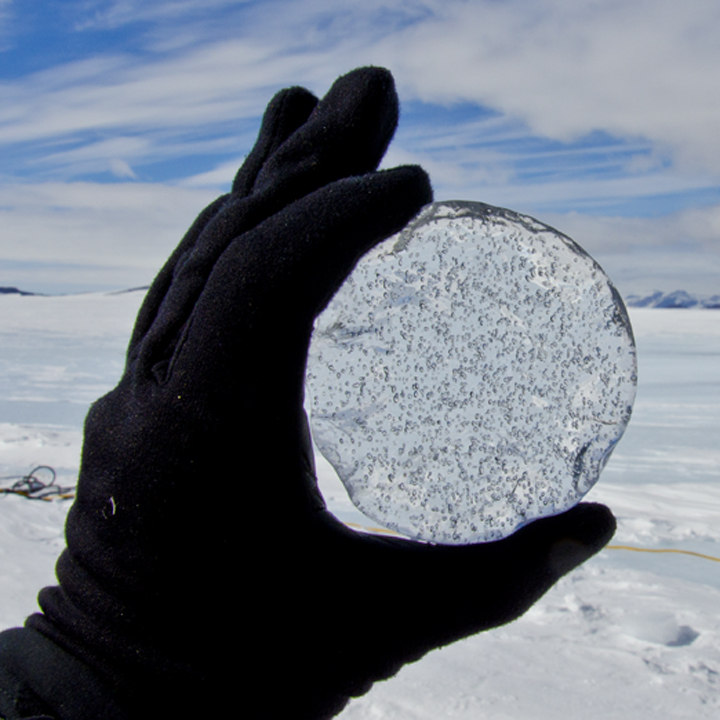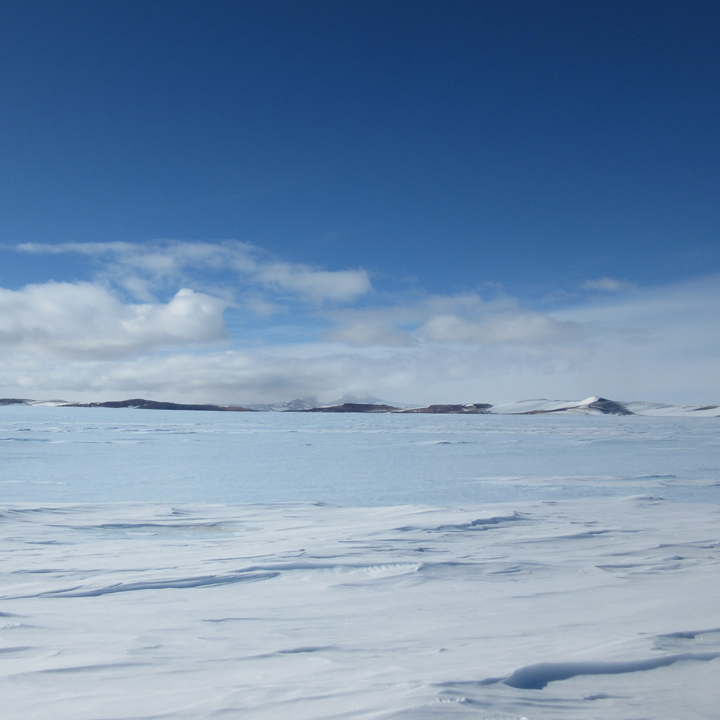AHILLES
Allan HILLs Englacial Site Selection project supported by
NSF grants PLR-1443461 and PLR-1443260
Allan HILLs Englacial Site Selection project supported by
NSF grants PLR-1443461 and PLR-1443260
Marine paleoclimate archives show that approximately one million years (myr) ago Earth's climate transitioned from 40 thousand year (kyr) glacial /interglacial cycles to 100 kyr cycles. This study was designed to map the distribution of one million year (myr) old ice in the Allan Hills Blue Ice Area, Antarctica (AH-BIA) using state of the art ground penetrating radar. The AH-BIA was demonstrated to contain a continuous record of the past 400 kyr and is also the collection location of the oldest ice samples (990 kyr) yet recovered. The maps resulting from this study will be used to select an ice core drilling site at which a 1+ myr continuous record of climate could be recovered. No ice core based climate record, the only kind of record to directly capture atmospheric gases and aerosols, yet extends continuously beyond the past 800 kyr. A 1+ myr record will allow better understanding of the major mechanisms and driving forces of natural climate variability within the 100 kyr world.
Over the course of 10 days in January-February of 2016 a team of four (Nicole Spaulding, Twit Conway, Seth Campbell and Laura Kehrl) collected an extensive series of ground penetrating radar (GPR) profiles throughout the main icefield (MIF) of the Allan Hills Blue Ice Area (AH BIA).

The GPR profiles collected illustrate that within the accumulation area of the AH BIA MIF, it will be possible to collect an ice core from a site devoid of both extensive fracturing at the surface and deformation of internal layering near bedrock. Comparison with earlier GPR profiles suggest that the reflections seen at 700 meters depth are those of a tephra layer known as "Big Black" and dated to 110,000 years old. 500 meters of well ordered ice remain below that layer.

Our collaborative effort resulted in the selection of a drill site that should contains a record of several continuous glacial/interglacial transitions, possibly including a continuous record of paleoclimate for the past 1 million + years. Such a core would refine our understanding of the major climate transition that took place between 800 ka-1.2 Mya. At minimium this drill site will provide the high quality, high resolution record of the Eemian interglacial that is much needed from this part of the continent by the paleoclimate community.